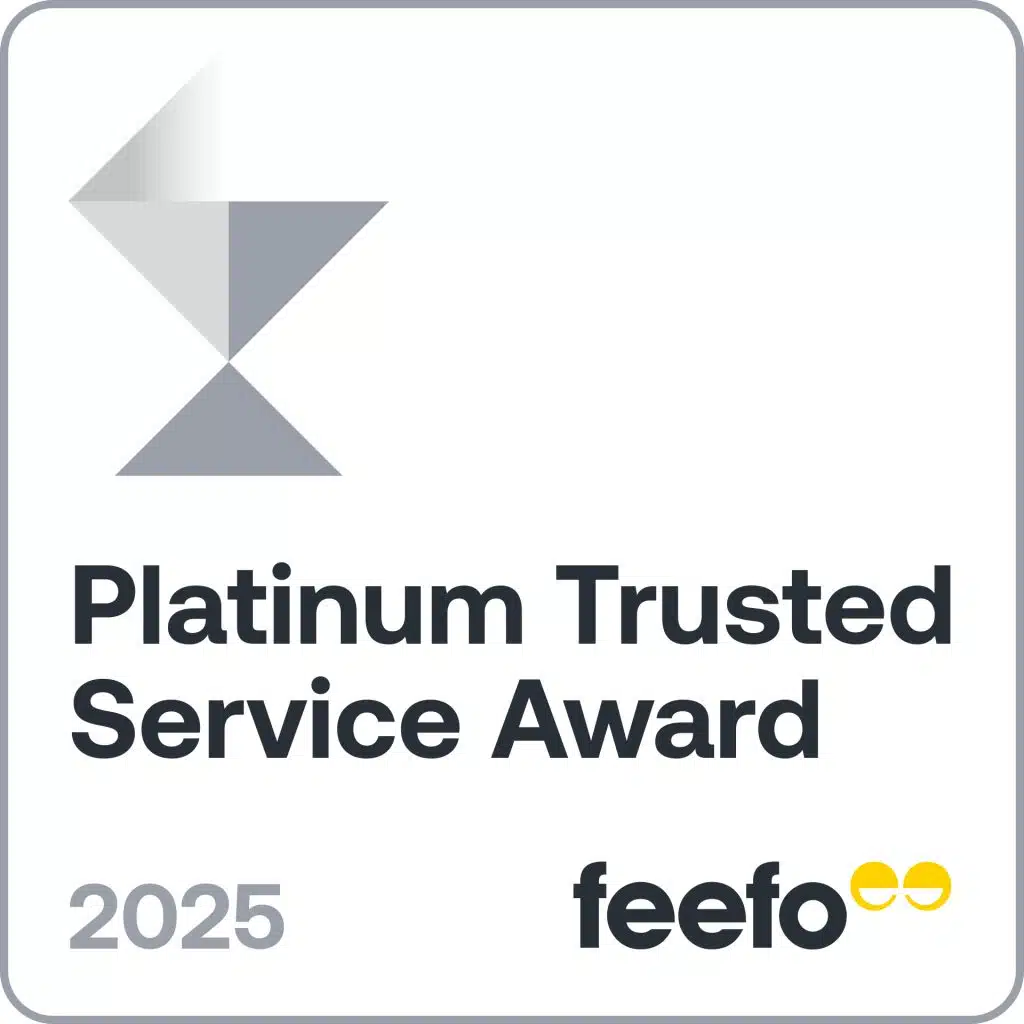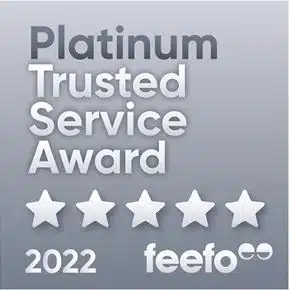What is a novated lease?
A novated lease is a salary sacrificing or salary packaging agreement between you, your employer and a novated lease provider. Here’s a quick rundown of how it works:
- Your novated lease provider purchases your car and leases it to your employer, who then gives you access even if it’s only for private use
- Your employer covers your lease obligations by deducting them from your pre-tax salary
- Your payments are made until the end of your lease term (up to five years), at which point you can decide between several different options
The main reason why most people choose novated leases is what happens in step #2: pre-tax salary deductions. By taking the payment from your payslip before it’s sent to you, your taxable income is reduced, which in turn lowers the tax you’re required to pay. As an added bonus, you can also save on GST, as this can be claimed on the car purchase by your leasing company.
All novated leases come with a residual value or payment. This is a lump sum that’s intended to represent the value of your car at the conclusion of the lease. The Australian Taxation Office (ATO) has set minimum required residual values for each lease term length, which are as follows:
| Lease term | Minimum residual value % |
|---|---|
| 12 months | 65.63% |
| 24 months | 56.25% |
| 36 months | 46.88% |
| 48 months | 37.50% |
| 60 months | 28.13% |
What are the different types of novated lease?
There are two types of novated lease on offer in Australia: fully maintained and non-maintained novated leases. Here’s how they differ from one another:
| Fully maintained | Non-maintained | |
|---|---|---|
| On-road costs included | Yes | No |
| Included in payment | Leasing costs Interest Comprehensive and CTP insurance Vehicle registration Roadside assistance Petrol or charging costs Servicing and repair costs Tyres |
Leasing costs Interest |
| Total payment cost | Higher | Lower |
The main benefit of fully maintained leases is that the cost of all the included extras comes out of your pre-tax salary, rather than post-tax. This means they can save you more money, as well as have GST claimable on these costs. It also saves time, as you don’t have to organise them yourself or access your savings.
In contrast, non-maintained novated lease payments only include the cost of your vehicle and the fees and interest associated with your lease. This means you’re responsible for arranging all the servicing, car insurance and everything else that would’ve otherwise been included in your agreement.
When you take out your novated lease through Savvy, we offer customised solutions if you want to pick and choose what to include in your package. For example, we can offer a fully maintained novated lease without car insurance included.
What happens at the end of my lease?

Option 1: Sell, trade or upgrade
If you're coming up to the end of your novated lease term and want to refresh your wheels, you can sell your car to cover the residual payment and start a new agreement with a new vehicle.

Option 2: Sell the car and end the lease
Alternatively, you can simply sell your car and end the agreement. You'll have to pay any difference between the car's sale price and the residual value but if you sell the car for more you keep the profit.

Option 3: Refinance the residual
You can continue to take advantage of your novated lease's tax benefits by refinancing your residual. This extends your existing lease term by up to five years and allows you to keep your current vehicle.

Option 4: Own the car outright
Finally, you can choose to pay the residual yourself and take full ownership of the car. This ends your novated lease and the tax benefits that come along with it, but there's no longer any interest in your car from third parties.

Option 1: Sell, trade or upgrade
If you're coming up to the end of your novated lease term and want to refresh your wheels, you can sell your car to cover the residual payment and start a new agreement with a new vehicle.

Option 2: Sell the car and end the lease
Alternatively, you can simply sell your car and end the agreement. You'll have to pay any difference between the car's sale price and the residual value but if you sell the car for more you keep the profit.

Option 3: Refinance the residual
You can continue to take advantage of your novated lease's tax benefits by refinancing your residual. This extends your existing lease term by up to five years and allows you to keep your current vehicle.

Option 4: Own the car outright
Finally, you can choose to pay the residual yourself and take full ownership of the car. This ends your novated lease and the tax benefits that come along with it, but there's no longer any interest in your car from third parties.
Why trust Savvy with your novated lease?
No cost for employers
Your employer doesn't have to pay anything extra. No FBT liabilities and no admin- we take care of everything for them.
Unlock thousands in savings
Save thousands per year in tax and GST plus get access to exclusive novated leasing discounts and Savvy Benefits' partners.
Free expert consultation
Whether you know exactly what you want or you're learning about novated benefits for the first time we're here to help.
What impacts the cost of my novated lease?
Beyond choosing between fully maintained (including what costs you want to incorporate into your payments) and non-maintained leases, there are plenty of things that have an effect on the cost of your novated lease. Some of these are:
- Interest: much like a car loan, interest is applied to your novated lease payments. It accounts for factors such as the amount borrowed, administrative expenses and the risk associated with leasing to the borrower.
- Finance and admin fees: these are charges associated with setting up and managing the lease.
- Choice of vehicle: the make, model and specifications of the car you choose will impact the overall cost.
- Post-tax contributions: most cars are subject to fringe benefits tax (FBT), which is required to be offset through post-tax contributions. However, electric vehicles are exempt from FBT, which can result in lower costs compared to traditional petrol or diesel cars.
- Driving distance: your annual mileage affects running costs, which can influence lease price or tax savings and the overall effectiveness of the lease.
- Car insurance: comprehensive car insurance is mandatory for novated leases. The cost of your car insurance policy can vary based on factors like your driving history, where you live and what car you drive.
In terms of car insurance for your novated lease, you can either include your own or opt for Savvy Fleet Insurance, which is specifically designed for novated leases (eligibility criteria apply).
Leasing a vehicle can provide substantial cost savings for both personal and business use. However, it’s important to understand all the potential costs involved. Since lease agreements and individual financial situations can vary greatly, it’s best to speak with an expert who can offer a tailored example based on your specific circumstances.
Novated lease tax benefits
One of the big advantages of novated leases is the tax benefits they offer. Here’s what you can expect from your novated lease:
- Income tax: as mentioned, because lease payments come out of your pre-tax income, the amount of income tax you’re liable to pay is reduced. This is despite the fact that you’re earning the same amount.
- GST on purchase: the GST on the purchase of the vehicle can be claimed by your leasing company, which can pass the savings of potentially thousands of dollars on to you. In 2025-26, the maximum credit claimable is $6,334.
- GST on running costs: it isn’t just the car purchase that you can avoid GST on. Insurance, registration, maintenance and fuel can all be GST-free, in addition to the ability to pay for them out of your pre-tax income (in the case of fully maintained novated leases).

Getting the best car loan deal
"Novated leasing is a tax-effective way to finance your vehicle while improving your personal cash flow. Whether your vehicle is new or pre-owned, used for business or personal travel, if you pay income tax, a novated lease could save you money and effort. Check online reviews for post-sale service and be sure to pick a company that values you for the life of your lease."

Your potential novated lease savings
| Car loan | Mortgage equity loan* | Cash | Novated Lease | Novated Lease (EV) | |
|---|---|---|---|---|---|
| Vehicle purchase price (inc GST) | $46,793 | $46,793 | $46,793 | $40,983 | $40,983 |
| Running costs over 5 years | $32,082 | $32,082 | $32,082 | $29,165 | $18,440 |
| Finance cost (inc. interest and fees) | $54,920 | $54,147 | $0 | $48,678 | $48,678 |
| Tax saved over 5 years | $0 | $0 | $0 | $12,783 | $25,775 |
| Novated lease cost comparison | $87,002 | $86,229 | $78,875 | $65,060 | $41,343 |
*Finance cost shown if the amount added to your mortgage is paid off in five years. If the mortgage top up amount to purchase a car is paid off over the remaining mortgage term, additional interest of over $30,000 could be charged over a 20-year period.
Figures are for illustrative purposes only, based on annual gross salary of $80,000 and travelling 15,000km/year over a five-year term. Vehicle price of $46,793 drive away, fuel price of $1.85 (or $0.35/kWh). Compared to a five-year secured loan of 6.49% p.a. and a mortgage redraw of 5.90% p.a.
How we support you
-
We help you feel comfortable asking any questions and give the support you need to make informed decisions.
-
Highly personalised care starts with your very own, dedicated consultant who you can contact by email, SMS or call.
-
Benefit from over 15 years of industry experience to quickly identify fact from fiction.
-
We think ahead and help you consider how a novated lease can add value towards your future goals and objectives.
Novated leases and fringe benefits tax (FBT)
One potential cost to consider when leasing your car is FBT. It’s a tax that applies to fringe benefits provided to employees by their business outside of their traditional salary. Novated leases are a common example of a fringe benefit, but they can also include health insurance and travel or accommodation allowances.
While this tax is charged to employers, this is often passed on to the employee. As of the 2024-25 FBT year, this is charged at a rate of 47% on the taxable portion of the benefit (equivalent to 45% plus the 2% Medicare Levy).
However, by making post-tax contributions to your car’s running costs, FBT is reduced to $0, which is why businesses allow employees to access the benefits of novated leasing. Each of the costs listed under the fully maintained lease section (as well as new tyres) can be paid for out of your post-tax income to cut down on your FBT liability. You don’t need to worry, though: your novated leasing provider works all this out for you.
The amount you contribute post-tax can be calculated in one of the following two ways:
- Statutory formula: a flat 20% rate on the cost of all car fringe benefits.
- Operating costs: in cases where cars are used largely for business purposes, any private use is calculated as an overall percentage and applied to pre-tax expenses (inclusive of GST). A logbook is required to track business and private use.
The following is an example of how FBT may look if not using either method:
| Cost of car | $50,000 |
| Statutory formula | 20% |
| Taxable portion | $10,000 |
| Grossed-up value (Type 1 @ 2.0802) | $20,802 |
| FBT payable | $9,776 |
Here’s how the above example would look using the ECM:
| Cost of car | $50,000 |
| Statutory formula | 20% |
| Taxable portion | $10,000 |
| Post-tax contribution | $10,000 |
| ECM per fortnight | $384 |
| ECM over a year | $10,000 |
| FBT payable | $0 |
What cars are exempt from FBT?
The list of vehicles that are exempt from FBT as of August 2025 is as follows:
| Make | Models |
|---|---|
| Abarth | 500e Turismo, 500e Scorpionissima |
| BMW | iX1, iX2, iX3 (M Sport only), i4 eDrive35 |
| BYD | Atto 3, Dolphin, Seal, Sealion 7 |
| Chery | C5 |
| Cupra | Born, Tavascan |
| Deepal | S07 |
| Ford | Mustang Mach-E (Select and Premium only) |
| Fiat | 500e |
| Geely | EX5 |
| GWM | Ora |
| Hyundai | Kona (all electric variants), Inster, Ioniq 5 (all variants except N, Epiq N Line AWD and Epiq DSM AWD), Ioniq 6 |
| Kia | EV3, EV5, EV6 (all variants except GT), Niro (all electric variants) |
| Leapmotor | C10 (all electric variants) |
| Lexus | UX |
| Mercedes-Benz | EQA, EQB |
| MG | IM5, IM6, MG4, MGS5 EV |
| Mini | Aceman, Cooper (all electric variants), Countryman (all electric variants) |
| Nissan | Ariya, Leaf |
| Peugeot | E-308 |
| Polestar | Polestar 2, Polestar 4 (all variants except Long Range Dual Motor with Packs) |
| Renault | Megane E-Tech |
| Skoda | Elroq, Enyaq |
| smart | smart #1, smart #3 |
| Subaru | Solterra |
| Tesla | Model 3, Model Y |
| Toyota | bZ4X |
| Volkswagen | ID. 4, ID. 5, ID. Buzz (Van and Wagon Pro variants only) |
| Volvo | C40, EX30, EX40 |
| Xpeng | G6 |
| Zeekr | Zeekr X |
All models and prices are sourced from CarsGuide and correct as of August 2025.
How to arrange a novated lease with Savvy
-
Find your car
We can help you lock in your vehicle if you haven’t already.
-
Review your budget
We'll set a tailored budget that your employer transfers to us each payroll.
-
Have your deductions set up
Your payslip will now show both pre-tax and post-tax deductions.
-
Enjoy on-road costs being bundled into your payments
Everyday car expenses, such as fuel, registration and insurance, are paid pre-tax.
If you need any help at all when applying for a novated lease or want to discuss salary packaging options further then reach out to Savvy Benefits.
Is a novated lease worth it?
Whether a novated lease is worth it for you depends on several factors. Here are some situations where a novated lease may (or may not) be right for you:
- You’re a high income earner: taking out a novated lease on a higher income could result in more meaningful tax savings, especially if it moves you into a lower tax bracket.
- You’re a low income earner: if you’re already paying a low amount of tax, it’s worth considering whether the tax savings from a novated lease would be significant enough to make it worthwhile..
- You’re leasing an EV: with their exemption from FBT, EVs are much more lucrative on a novated leasing arrangement than purchasing them outright or taking out a loan.
- You’re leasing a car up to the claimable GST limit: as mentioned, the maximum GST credit claimable is $6,334 in 2025-26, meaning the maximum GST-free car price is $69,674. Choosing a car at or around this limit will deliver the highest GST credit possible.
- You’re leasing a cheap used car from a private seller: these cars may not offer much value in the way of tax savings, nor will there be any GST claimable on the purchase.
- You’re going to use your car a lot: if you’re a person who loves racking up the kilometres, you can really start to experience the benefits of having on-road costs bundled into your package.
If you want to know more and explore your options, you can get a quick quote with us today and speak to one of our novated leasing experts.
Driver Handbook
Download our Driver Handbook for all the information you need to know about getting the most from your novated lease with Savvy Benefits!
Download- NALSPA News - National Automotive Leasing and Salary Packaging Association
- ATO Interpretative Decision - Australian Taxation Office
- Purchasing a motor vehicle - Australian Taxation Office
- How fringe benefits tax works - Australian Taxation Office
- Reducing your FBT liability - Australian Taxation Office
- Electric cars exemption - Australian Taxation Office
- CarsGuide - CarsGuide






